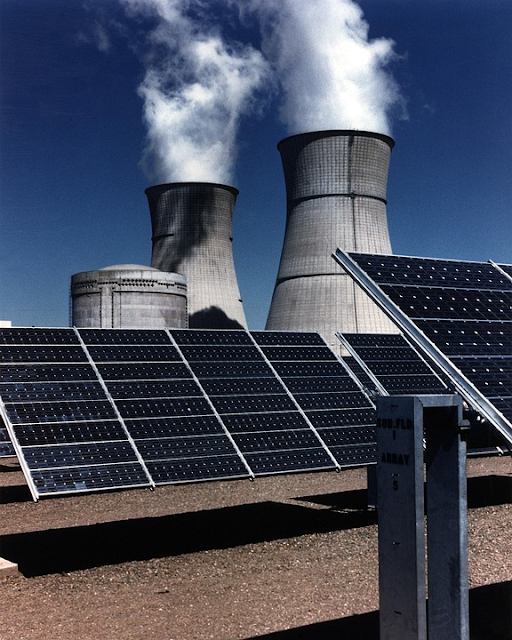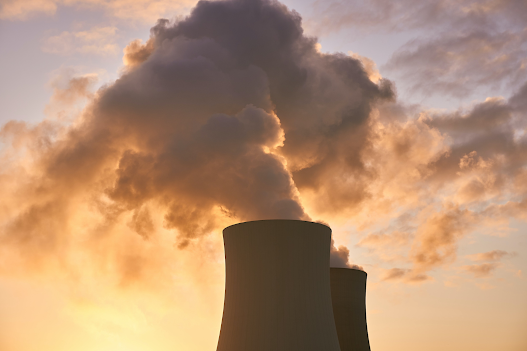 |
| Electrical-transmission-towers-electricity-pylons |
While
this is a cause for concern, we should try not to restrict our analysis to the
numbers alone. As stated in the government's advice, "indices should not
be compared to previous months,” as this is not a true reflection of the state
of the economy. If anything, these numbers report the efficacy of lockdown. It
is hoped that with the reopening of the economy, employment and demand can be
revived, especially in the manufacturing sector.
However,
it depends on various factors, including strengthening the country's long-term
growth prospects and measures to increase investment and consumer confidence
through proper implementation of the government's 'Aatma Nirbhar Bharat
Abhiyan'.
But
the effect of the lockdown, which itself was reduced to 22.5% in
As
a starting point, it was expected that commercial, industrial, and
transportation (about 500 million units per demand day) activity in the country
would be affected by the demand for electricity, due to restrictions on demand,
and production lockdown. Besides, the demand profile is natural due to domestic
consumption (24.8 percent in 2018-19), commercial (8.2 percent in 2018-19), and
industrial (41.2 percent in 2018-19) consumption. An unnatural mantra of calm the weather until the end of
To
ensure uninterrupted operation for public utilities, including power
generation, transmission, and distribution services, essential services were
classified during lock-down but demand and government clarifications state that
"must go" for renewable energy projects The situation remained
unchanged (meaning electricity produced from renewable sources should be
prioritized over the use of other sources), resulting in a general energy mix
change. About 72.5 percent of the energy mix, coal / thermal power plant shares
had fallen below 66 percent in the one-month period before the lock-down. This decrease was due to an increase in the share of all other sources, including
hydro from 8.7 percent to 11.6 percent, renewable from 9.4 percent to 10.9
percent, nuclear from 3.3 percent to 4 percent, and gas from 3.8 percent to 5.1
percent in absolute terms, thermal power generation decreased by 25 percent
compared to month-on-month on both sides of the lock-down declaration. Renewable
energy, which includes solar, wind, small hydro, and bio-gas, saw a decrease in
total production (about 4 percent), but a slight increase in solar production.
 |
| Thermal Power with Solar-Panel |
Strained the health of electric utilities has been adversely affected for several reasons. While mainly due to lack of revenue collection from high tariff C&I consumers (who subsidize low tariff domestic and agricultural consumers), high aggregate, technical and commercial losses (low efficiency of power system supplying domestic consumers), among others, were opposed to C&I consumers, with the increase in subsidized consumers offering lower tariffs.
Besides,
the old methods of manual metering and billing and the domestic credit crunch
have also increased the revenue collection problem from residential consumers.
To help ease the financial stress, the Ministry of Power has announced a
liquidity support package of INR 90,000 crore for discoms and reduced the penalty of late payment for companies and payments to create transmission
licenses. However, the lack of liquidity is bound to affect capacity addition
plans in the sector as a whole.
With the gradual reduction of lockdowns across the country, electricity demand is
already booming, largely on the back of rising industrial activity. Residential
demand is also expected to increase due to hot weather. In fact, the peak
demand observed on 25 May was higher than the peak demand on a single day in
2019. Although commercial areas include offices, shopping malls, they can
reduce demand, keeping in mind the demand of people for some time at home with
distance work and online education. But there is a clear indication that the
power sector will bounce back to pre-COVID-19 levels if the previous year's
level is not attained.
Keeping
an eye on electricity demand in the next few months is a clear indication of
the level of the revival of the Indian economy. Such clues will be found and
whether government interventions are having the desired effect.
As
a side note, the government, and other stakeholders must use learning to bail
out the sector. Policy changes, business modifications, and technological
innovations need to be considered to make the sector more cost and
resource-efficient. There is a need to revisit the already addressed DISCOM
loan problem under the UDAY scheme. The cross-subsidy challenge and new tariffs
and market mechanisms require immediate attention.
 |
| Nuclear Power |
Besides,
the application of innovation in the value chain needs to be accelerated by the
digitization of grid operations, smart grids, energy efficiency interventions,
and the adoption of advanced metering. This crisis allows the adoption of
renewable energy and energy storage keeping in mind the low cost of operating
renewable power plants, the capacity reduction factor of coal power plants in
the country (estimated 56.5 percent) 2020–21 epidemic), and India Commitment to
global climate change goals.
Stepping up to endless
opportunities:
Electrification
of all non-irrigated villages on April 28, 2018, ahead of May 1, 2018
deadline, led by
In
2018-19, the Ministry of Power had set a power generation target of 1,265
billion units (BU). The actual generation (1,249.337 BU) represented an
achievement of 98.76% and an increase of approximately 3.57% from 2017.
According
to the latest major world energy figures published by IEA in 2019,
A
total of $ 10.21 Bn (DDUGJY: $ 5.79 Bn and RE component: $ 4.42 Bn) under the
In
addition to the above, an additional amount of $ 1.92 Bn to build additional
infrastructure to support 100% domestic electrification.
100%
FDI is allowed in the power generation sector which is registered in the
transmission and distribution of electrical energy and electricity trade under
one generation (excluding nuclear power), automatic route
Central
Electricity Regulatory Commission (Power Market) Regulations, 2010 from all
sources. Power exchange under automatic routes under permission.
 |
| Thermal Power-Super-Critical |
Foreign Direct Investment
(FDI)
Last
updated: October 2020
Introduction of FDI in
Apart
from being an important driver of economic growth, foreign direct investment
(FDI) has been a major non-debt financial resource for
The
favorable policy governance and strong business environment of the Government of
According
to the Market Size Department of
Promotion of Industry and Internal Trade (DPIIT), FDI equity inflows into India
were the US$ 469.99 billion between April 2000 and March 2020, indicating the
government's ease of doing business and improving FDI effort standard results.
As
a result, FDI equity inflows into
During 2019-20, India received maximum
FDI equity inflows from Singapore (US$ 14.67 billion), followed by Mauritius (US$
8.24 billion), Netherlands (US$ 6.50 billion), USA (US$ 4.22 billion), and
Japan (US$ 3.22 billion).
Investment/Development of Indian Power Sector
Some
of the recent significant FDI announcements are as follows:
Ø On
Ø In September 2020, Cashaa, a London-based
Neobank, launched O1ex, a Dubai-based block-chain investment, and advisory firm
to expand worldwide, including India, Africa, and the Caribbean Raised by $ 5
million (Rs. 360 million) markets In India, the company plans to tap into the
growing crypto user market by launching a new bank for the crypto banking
system.
Ø In September 2020, Unacademy, an
Edtech platform raised US$ 150 million from Softbank Group (a Japanese
conglomerate), raised its valuation to US$ 1.45 billion.
Ø On 21 August 2020,
Ø Israel-based
Core Logic, a provider of machine learning-based log analytics and monitoring
solutions announced a strategic expansion in
Ø From January 2020 to July 2020, the
Ø India Inc’s outward foreign direct
investment (OFDI) dropped to US$ 5.724 billion in the first four months (April
2020 – July 20120) of 2020-2021 against US$ 11.130 billion for the same period
in 2019–2020.
Ø OFDI was caused by a slow-moving
epidemic stalling in the first three months (April 2020: the US$ 1.018 billion;
May 2020: the US$ 1.294 billion; and June 2020: the US$ 893.18 million);
Substantial growth was recorded until July 2020 when OFDI reached the US $
2.518 billion, as economies around the world, began to unlock, and COVID-19
lock-down restrictions on operations began to soften.
 |
| Coal-fired thermal Power |
In
August 2020, the Commercial Coal Mining Policy was amended by the Government of
In
May 2020, the government increased FDI in the defense manufacturing sector from
automatic 49% to 74% under the automatic route.
In
April 2020, the government amended the existing consolidated FDI policy to
restrict opportunistic acquisitions of neighboring countries or acquisitions of
Indian companies.
In
March 2020, the government allowed NRIs to hold a 100% stake in Air
.
.
